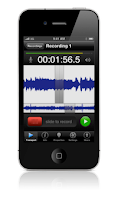 |
| The Famous Oceanway Studio B |
Ocean Way has a long history in the music world. Starting as one of the first independent recording studios in 1957, the studio was called United (then later United Western) and was originally owned by audio pioneer Bill Putnam (inventor of the UREI line of audio gear) with the backing of superstars of the day Frank Sinatra and Bing Crosby.
United/Ocean Way has always been noted for the major artists that recorded there, starting with Sinatra, Nat King Cole and Ray Charles in the beginning, to some of the biggest rock stars like The Rolling Stones, Green Day, Dr. Dre, U2 and The Red Hot Chili Peppers that came later.
Until the acquisition, the studio had been owned by Allen Sides, who built the Ocean Way brand far beyond the Hollywood studio, which included Record One Studios, Ocean Way St. Barth's, Ocean Way Nashville, Ocean Way Audio and Ocean Way Drums. None of those additional entities are included in the sale however.
Ocean Way has been one of the best recording facilities in the world for more than 50 years. It's acoustics (thanks to the brilliance of Bill Putnam) are top-notch as are it's equipment and staff. Let's hope that the new owners aren't looking at the purchase from a real estate standpoint (which is particularly valuable on Sunset Blvd in the middle of Hollywood) and keep this temple of sound in operation.
That said, Hudson Pacific Properties (the new owners), has 12 sound stages on the Sunset Gower lot and another 11 on Sunset Bronson, along with production companies for ABC, NBC, HBO, Showtime and even the local KTLA station. I wouldn't be surprised if Ocean Way was quietly turned into another stage or production offices sometime in the future. Here's hoping that won't happen.
----------------------------------
You should follow me on Twitter for daily news and updates on production and the music business.
Don't forget to check out my Music 3.0 blog for tips and tricks on navigating social media and the new music business.




